Malta’s Greenhouse Gas Emissions Profile
Greenhouse gas inventories
As a party to the United Nations Framework Convention on Climate Change (UNFCCC) and its protocols and agreements, and in accordance with EU legislation, Malta has the obligation to submit an annual inventory of anthropogenic greenhouse gas emissions by sources and removals by sinks.
To better inform climate change mitigation policymaking, the first step is to determine what the current state of play is with regards to emissions and removals of greenhouse gases from all human-induced activities. The National Greenhouse Gas (GHG) Inventory is the key tool used for the monitoring and reporting of emissions and removals.
The format of, and methodology for, national GHG inventory reporting are based on international reporting procedures which are agreed by Parties to the UNFCCC, via the work and decisions of the IPCC — Intergovernmental Panel on Climate Change
Which are the greenhouse gases for which an inventory is produced?
A greenhouse gas inventory covers the following ‘direct’ greenhouse gases: carbon dioxide, methane, nitrous oxide, hydrofluorocarbons, perfluorocarbons, sulphur hexafluoride and nitrogen trifluoride.
It is the practice for so-called ‘indirect’ (or ‘precursor’) greenhouse gases (carbon monoxide, nitrogen oxides, sulphur dioxide and non-methane volatile organic compounds) to also be included in the inventory, though these are reported separately and not included in national totals. This discussion focusses on the afore mentioned direct greenhouse gases.
What is the Global Warming Potential of Greenhouse Gases?
A key parameter in the determination of emissions and removals of greenhouse gases is the capacity of each chemical species to cause global warming. This depends on the unique radiative properties of each species, their molecular weight and the lifetime of the compounds within the atmosphere.
A simple working method provides for the calculation of the relative contribution of a unit emission of each gas, relative to the effect of a unit emission of CO2 integrated over a fixed period. A 100-year time horizon has been chosen by the UNFCCC, in view of the relatively long-time scale for addressing climate change. The calculation method established the Global Warming Potential (GWP) for each individual GHG.
The GWP can thus be defined as the warming influence over a set time period of any GHG, relative to that of CO2.
Which activities are covered by the GHG inventory?
A national GHG inventory covers practically all anthropogenic activities, aggregated into sub-categories and categories, and sectors. Sectors are the highest hierarchical level of aggregation of activities. 5 such sectors are recognized:
- Energy (including emissions from fossil fuel use in energy generation, industry, transport and buildings);
- Industrial Processes and Product Use (IPPU; includes emissions from industrial processes other than fossil fuel combustion, and, of particular relevance to Malta, emissions of F-gases from refrigeration and air-conditioning);
- Agriculture (includes emissions from both animal husbandry and crop cultivation);
- Land Use, Land-use Changes and Forestry (LULUCF; including emissions and removals resulting from changes in land use and anthropogenic forestry activities); and,
- Waste (includes emissions from solid waste management practices, referring to landfilling, biological treatment of solid waste, incineration, and wastewater treatment).
Malta’s National GHG Inventory
The Climate Action Authority (CAA) is designated by law as the national GHG Inventory Agency for the country, thus being responsible for the annual compilation of Malta’s GHG inventory. The inventory is submitted to the European Commission and to the UNFCCC Secretariat and is subject to separate annual reviews by expert review teams in accordance with EU legislation and with UNFCCC decisions.
The CAA’s work in respect of GHG inventories includes deciding on the methodologies for the estimation of emissions and removals, gathering the necessary activity data for all relevant activities, performing the necessary calculations, compiling the results into the approved reporting format and preparing a detailed written report that presents the approaches used for each activity category.
The most recent GHG Inventory for Malta (2025 submission covering the time-series 1990-2023), including the written National Inventory Document (NID) and the detailed Common Reporting Tables (CRT) may be accessed at the National Inventory Submissions 2025 | UNFCCC
Overview of main trends in Malta’s GHG Inventory
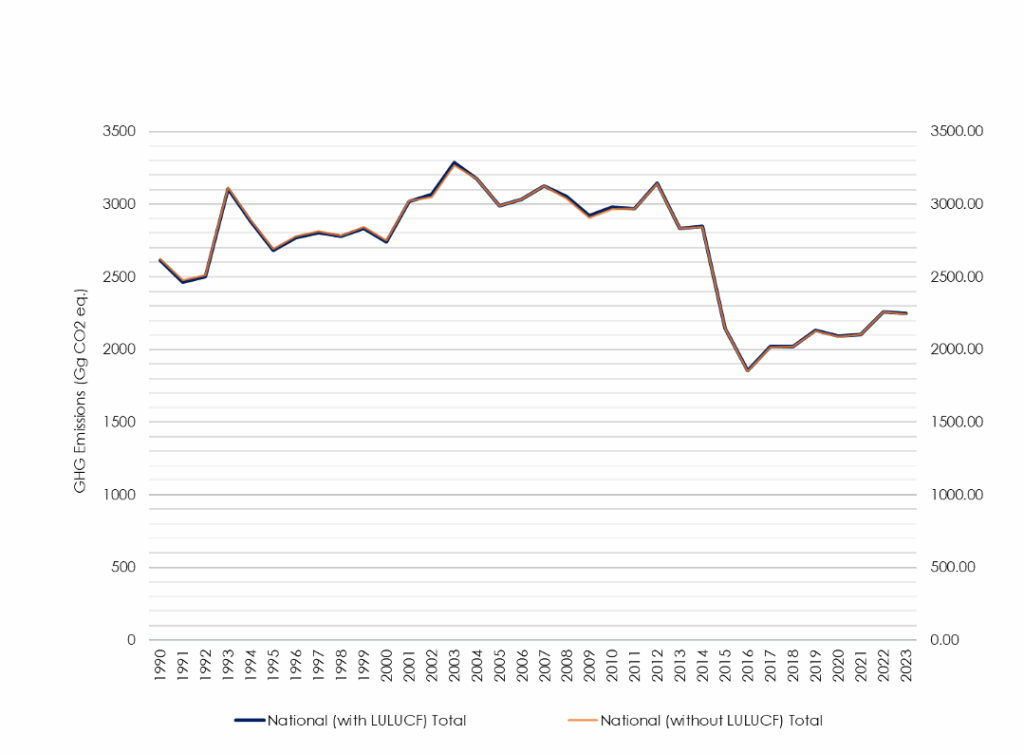
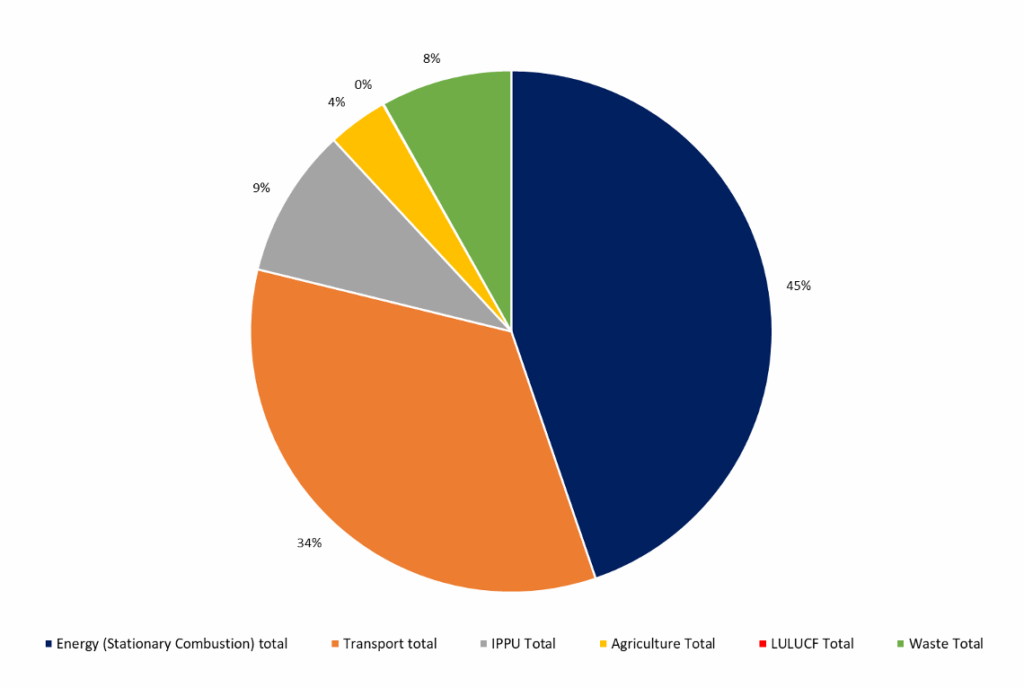
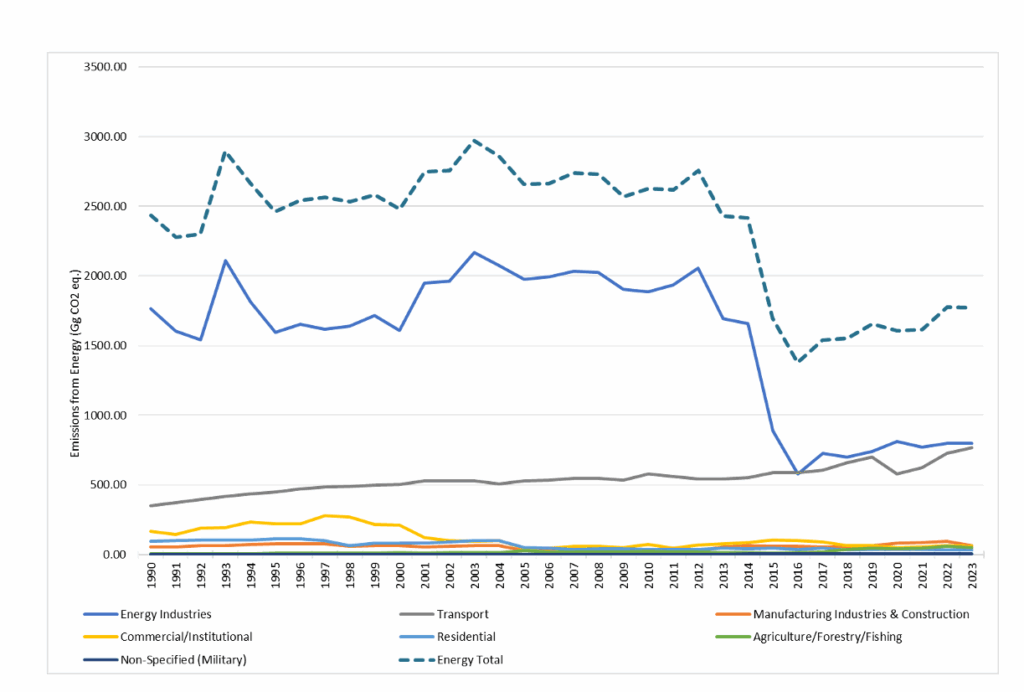
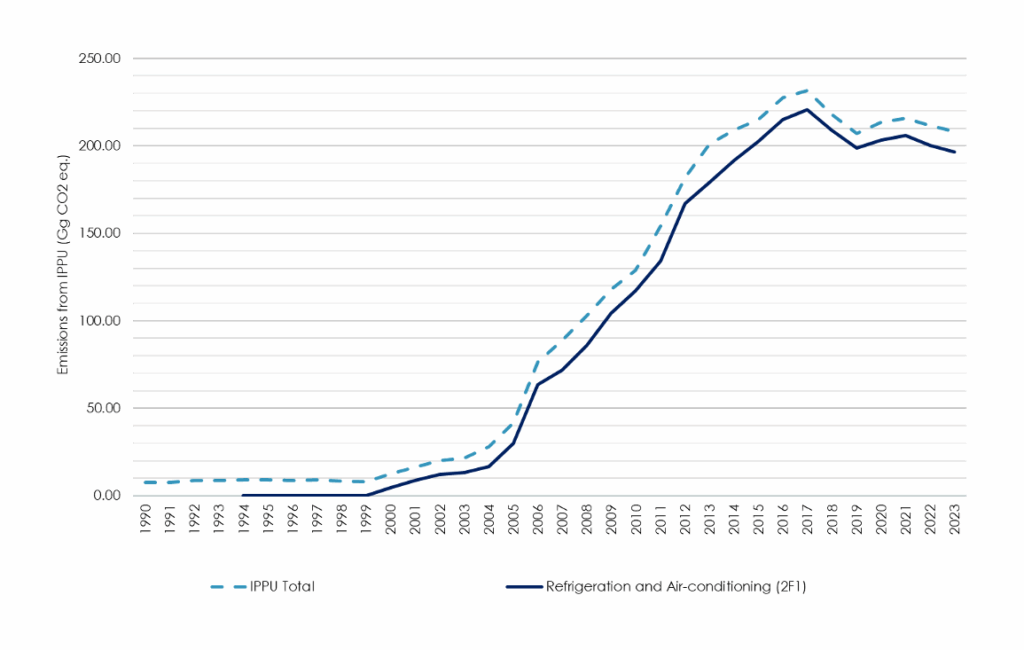
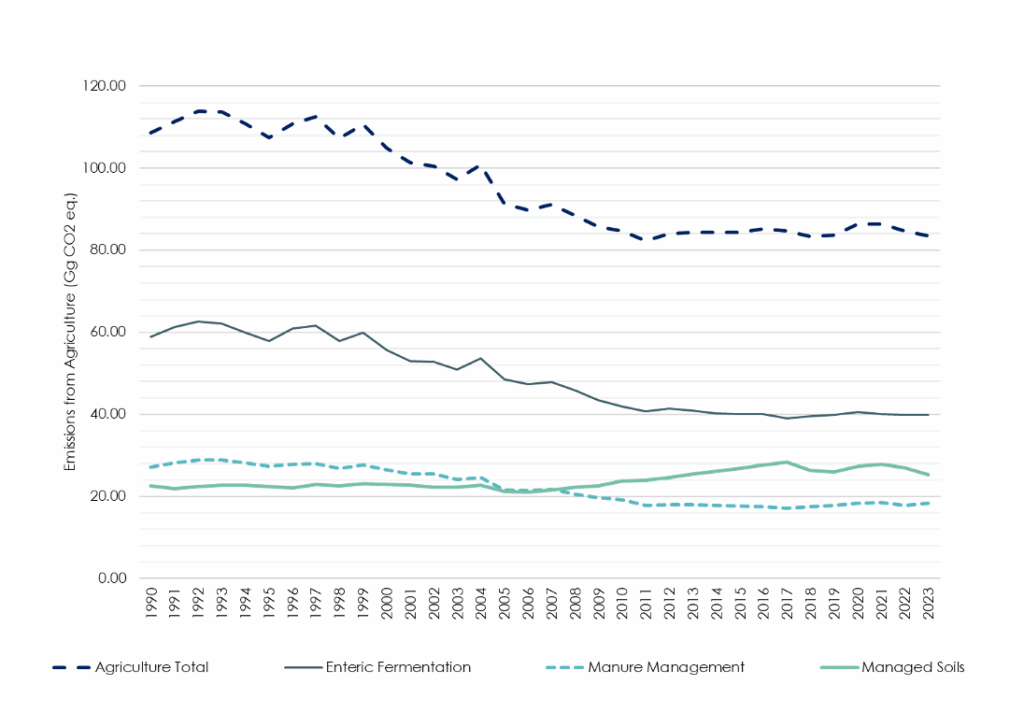
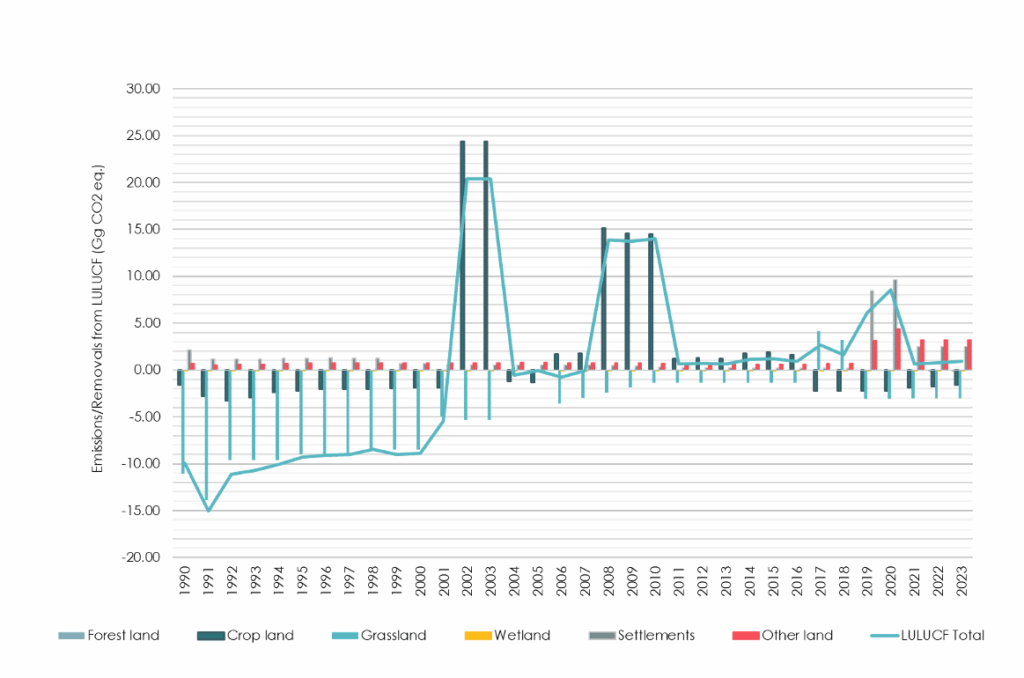
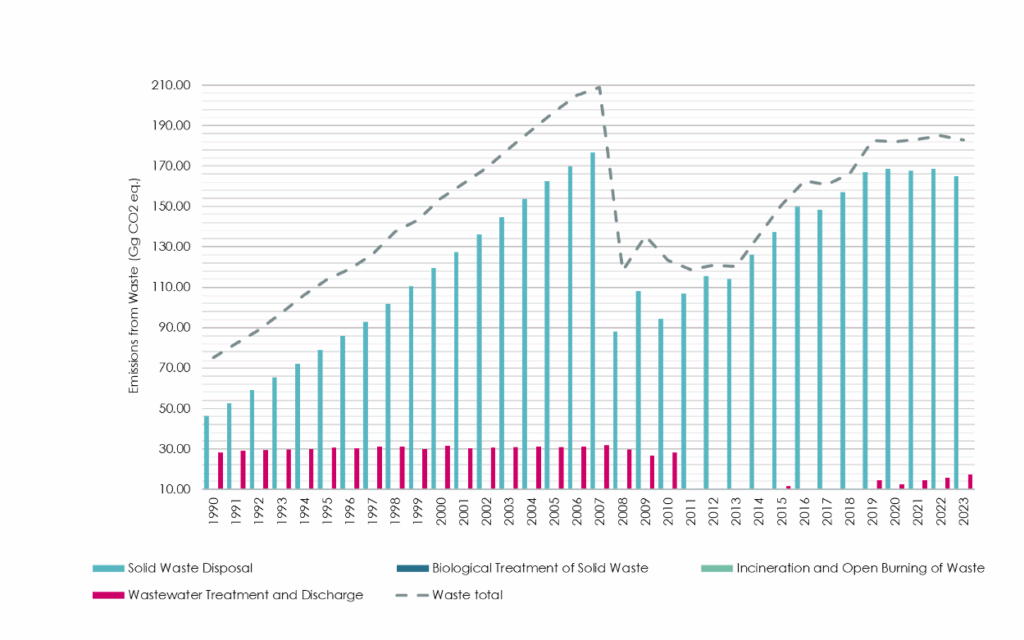
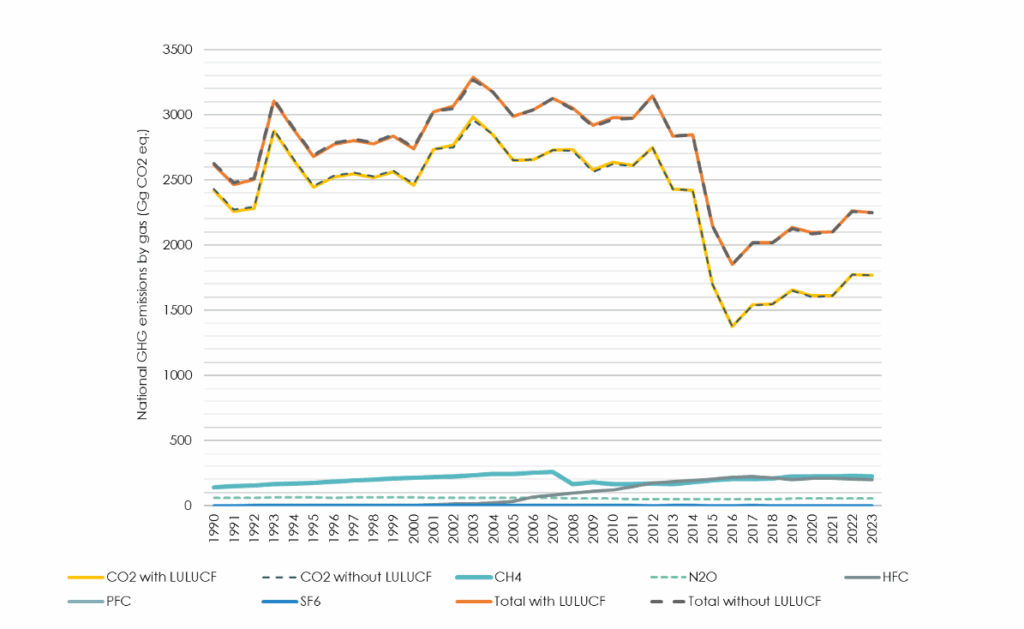
Contact us:
If you require more information on Malta’s National GHG Inventory, please contact us at reporting.caa@climateaction.gov.mt

